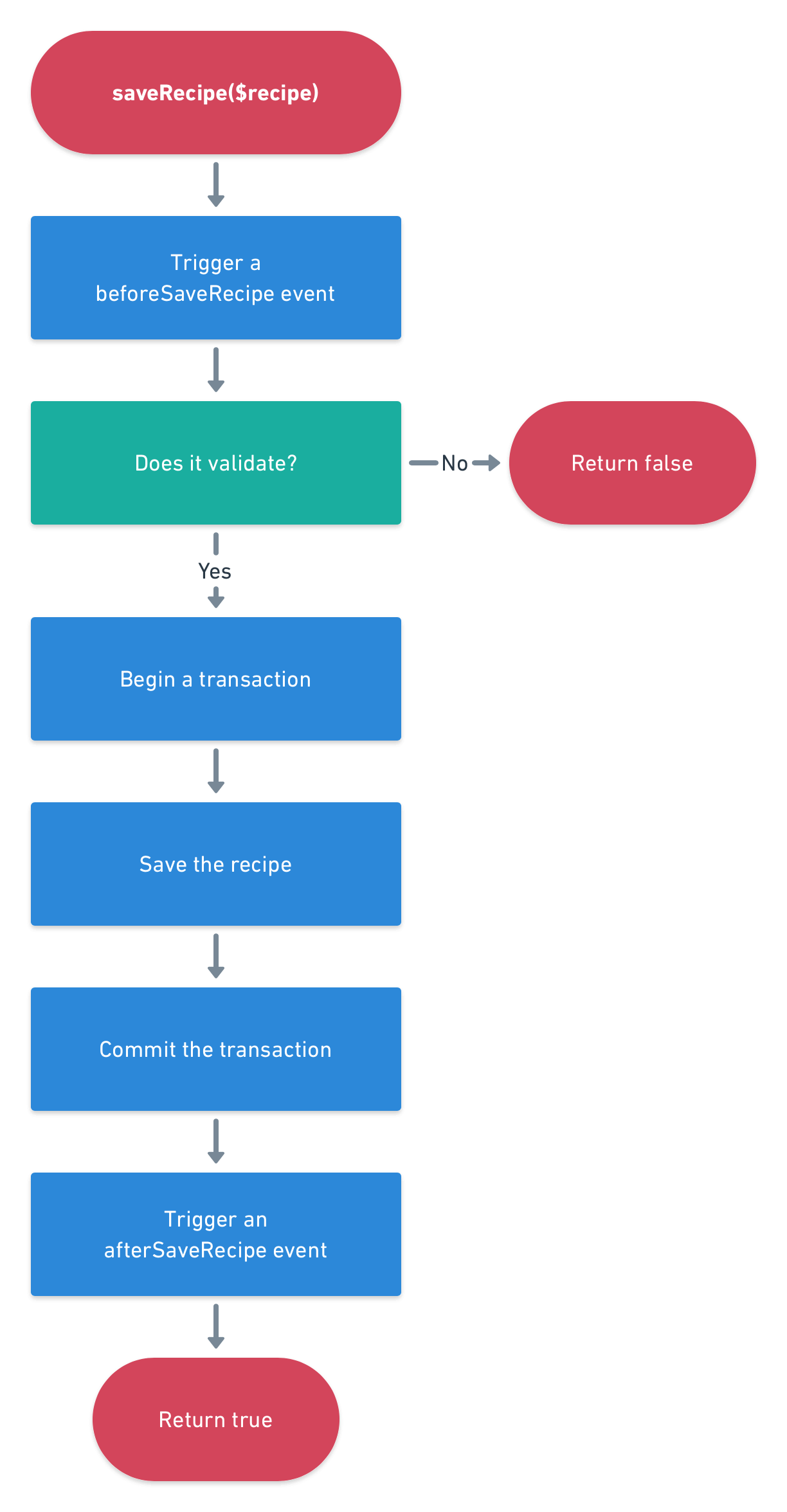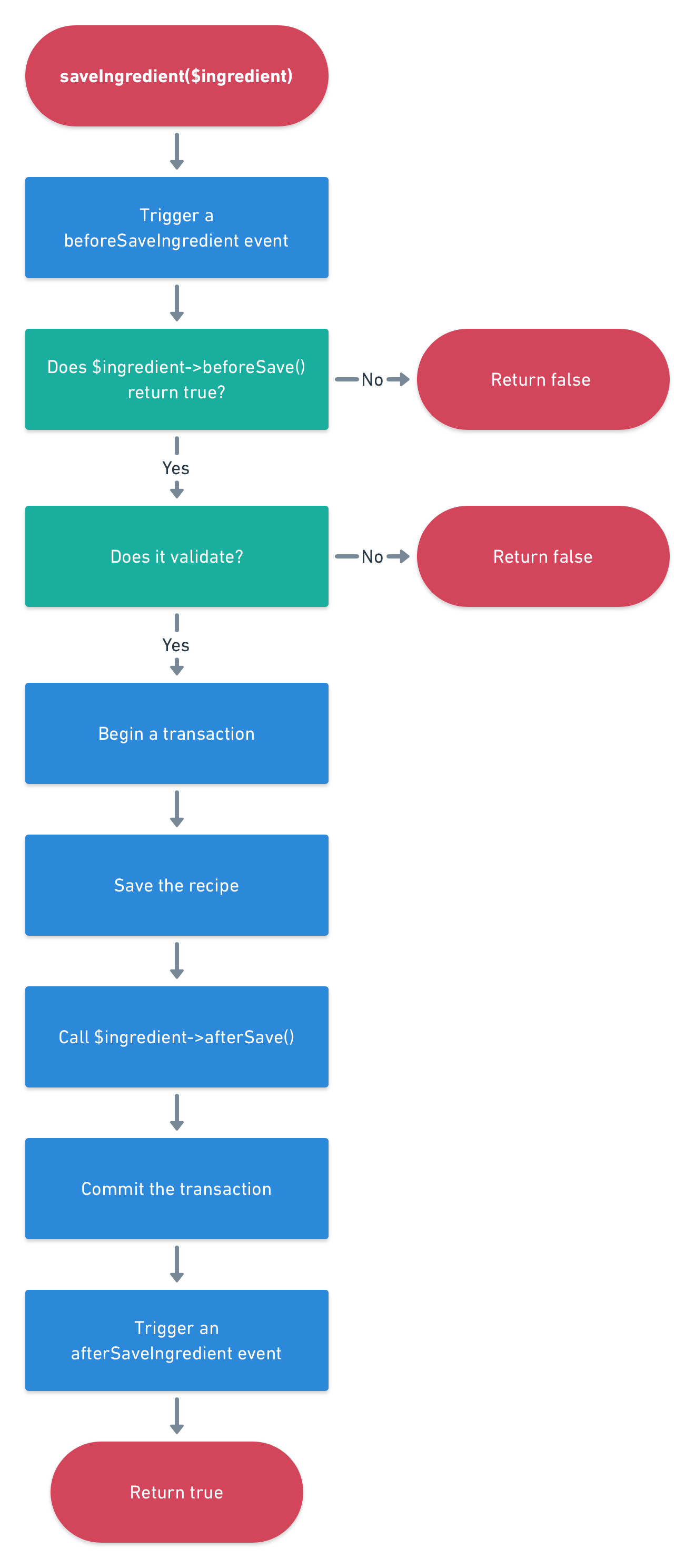Services
Services are singleton (opens new window) classes that get attached to your primary plugin class as components (opens new window).
They have two jobs:
- They contain most of your plugin’s business logic.
- They define your plugin’s API, which it (and other plugins) can access.
For example, Craft’s field management code is located in craft\services\Fields (opens new window), which is available at Craft::$app->getFields(). It has a getFieldByHandle() method that returns a field model by its handle. If that’s something you want to do, you can call Craft::$app->getFields()->getFieldByHandle('my-field-handle').
# Service Class
Create a service class using the generator:
If you would prefer to start from scratch, create a services/ subdirectory within your plugin’s src/ directory, and a file within it named the same as the class itself. If you want to name your service class Foo then name the file Foo.php.
Open the file in your text editor and use this template as its starting point:
<?php
namespace mynamespace\services;
use yii\base\Component;
class Foo extends Component
{
// ...
}
Once the service class exists, you can register it as a component on your primary plugin or module class by calling setComponents() (opens new window) from its init() (opens new window) method:
public function init()
{
parent::init();
$this->setComponents([
'foo' => \mynamespace\services\Foo::class,
]);
// ...
}
Plugins also have a special config() (opens new window) method you can use instead if you’d like to make your service extensible at the project level:
public static function config(): array
{
return [
'components' => [
'foo' => ['class' => \mynamespace\services\Foo::class],
],
];
}
Any component registered via the config() method can be customized from the project’s config/app.php:
return [
'components' => [
'plugins' => [
'pluginConfigs' => [
'my-plugin' => [
'components' => [
'foo' => [
'myProperty' => 'bar',
],
],
],
],
],
],
];
# Calling Service Methods
You can access your service from anywhere in the codebase using MyPlugin::getInstance()->serviceName. So if your service name is foo and it has a method named bar(), you could call it like this:
MyPlugin::getInstance()->foo->bar()
If you need to call a service method directly from your primary plugin class, you can skip MyPlugin::getInstance() and use $this instead:
$this->foo->bar()
# Component Getters
Components set via setComponents() are ultimately resolved via Yii’s service locator (opens new window), which is why it’s possible to access them as “magic” properties.
This opaque access can break some IDE’s ability to infer the correct class, so it can be helpful to provide hints in your main plugin or module class:
- Use phpDocumentor (opens new window) tags to describe these virtual properties:
@property Foo $foo; - Add your own getter methods, with the correct return types;
Together, this might mean your class looks like this:
namespace mynamespace;
use craft\base\Plugin;
use mynamespace\services\Foo;
/**
* My Plugin Class
*
* @property Foo $foo
*/
class MyPlugin extends BasePlugin
{
public function init()
{
// ...
$this->setComponents([
'foo' => Foo::class,
]);
}
public function getFoo(): Foo
{
return $this->get('foo');
}
}
# Model Operation Methods
Many service methods perform some sort of operation for a given model, such as a CRUD operation.
There are two common types of model operation methods in Craft:
Methods that accept a specific model class (e.g. craft\services\Categories::saveGroup() (opens new window), which saves a category group represented by the given craft\models\CategoryGroup (opens new window) model). We call these class-oriented methods.
Methods that accept any class so long as it implements an interface (e.g. craft\services\Fields::deleteField() (opens new window), which deletes a field represented by the given model that implements craft\base\FieldInterface (opens new window), regardless of its actual class). We call these interface-oriented methods.
Both types of methods should follow the same general control flow, with one difference: interface-oriented methods should trigger callback methods on the model before and after the action is performed, giving the model a chance to run its own custom logic.
Here’s an example: craft\services\Elements::saveElement() (opens new window) will call beforeSave() and afterSave() methods on the element model before and after it saves a record of the element to the elements database table. Entry elements (craft\elements\Entry (opens new window)) use their afterSave() method as an opportunity to save a row in the entry-specific entries database table.
# Class-Oriented Methods
Here’s a control flow diagram for class-oriented methods:

It’s only necessary to wrap the operation in a database transaction if the operation encompasses multiple database changes.
Here’s a complete code example of what that looks like:
public function saveRecipe(Recipe $recipe, $runValidation = true)
{
$isNewRecipe = !$recipe->id;
// Fire a 'beforeSaveRecipe' event
$this->trigger(self::EVENT_BEFORE_SAVE_RECIPE, new RecipeEvent([
'recipe' => $recipe,
'isNew' => $isNewRecipe,
]));
if ($runValidation && !$recipe->validate()) {
\Craft::info('Recipe not saved due to validation error.', __METHOD__);
return false;
}
// ... Save the recipe here ...
// Fire an 'afterSaveRecipe' event
$this->trigger(self::EVENT_AFTER_SAVE_RECIPE, new RecipeEvent([
'recipe' => $recipe,
'isNew' => $isNewRecipe,
]));
return true;
}
# Interface-Oriented Methods
Here’s a control flow diagram for interface-oriented methods:

Here’s a complete code example of what that looks like:
public function saveIngredient(IngredientInterface $ingredient, $runValidation = true)
{
/** @var Ingredient $ingredient */
$isNewIngredient = !$ingredient->id;
// Fire a 'beforeSaveIngredient' event
$this->trigger(self::EVENT_BEFORE_SAVE_INGREDIENT, new IngredientEvent([
'ingredient' => $ingredient,
'isNew' => $isNewIngredient,
]));
if (!$ingredient->beforeSave()) {
return false;
}
if ($runValidation && !$ingredient->validate()) {
\Craft::info('Ingredient not saved due to validation error.', __METHOD__);
return false;
}
$transaction = \Craft::$app->getDb()->beginTransaction();
try {
// ... Save the ingredient here ...
$ingredient->afterSave();
$transaction->commit();
} catch (\Exception $e) {
$transaction->rollBack();
throw $e;
}
// Fire an 'afterSaveIngredient' event
$this->trigger(self::EVENT_AFTER_SAVE_INGREDIENT, new IngredientEvent([
'ingredient' => $ingredient,
'isNew' => $isNewIngredient,
]));
return true;
}